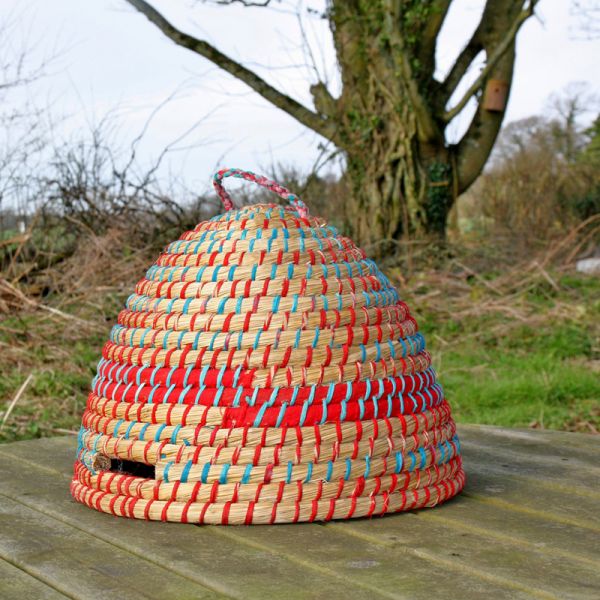Decorative Bee Skep with Recycled Sari
This decorative Artisan Bee Skep is a fusion between the traditional European skeps and the skilled handmade style of artisans from Bangladesh. Making it a modern take on the traditional style bee skeps used for managing bees in the early days of beekeeping across much of Europe.
Delivery Information
Delivery within an estimated 1 - 2 working days
Delivery is Free to UK Mainland except for the following where a surcharge may apply: PH17-26, AB31-38, 41-45, 51-56, IV1-28, 30-32, 36, 53-54, PH30-41, 49-50, KW1-14, ISLE OF WIGHT PO30-41, PA21-41, ISLE OF ARRAN KA27-28, ISLE Of MAN IM, PH42-44, SHETLAND ISLANDS ZE, GUERNSEY GY, GY9 -10 (POA), JERSEY JE, PA20, 42-49, 60-78, 80, IV40-49, 51-52, 55-56 & 63, KW15-17, ISLE OF LEWIS, HARRIS, SCALPAY, NORTH AND SOUTH UIST, BENECULA, BARRA, HS, please ask before ordering.
Details
This decorative Artisan Bee Skep is a fusion between the traditional European skeps and the skilled handmade style of artisans from Bangladesh. Making it a modern take on the traditional style bee skeps used for managing bees in the early days of beekeeping across much of Europe.
These Fair-Trade handmade artisan bee skeps are tightly woven, and their natural design ensures they're water-resistant and provide valuable insulation. This style of skep was traditionally used for collecting swarms, now typically used for decorative purposes or as part of a re-wilding effort. It's always a good idea to plant wildflowers or other pollinating flowers close to the skep to attract bees and give them a valuable food source.
Each Artisan Bee Skep is handmade using natural seagrass and recycled saris to the highest quality finish and is totally plastic-free. The individual artisans choose the colourful recycled sari pattern around the entrance, making every nester unique.
Purchasing our Fair-Trade products helps both wildlife and people. In addition to giving your garden bees a home, you'll be supporting the artisan workers in Southern Bangladesh who make them-funding the survival of many women and their families in rural communities living in poverty.
Siting
If sited outside, the skep should be sheltered and raised from the ground. The skep can be anchored with tent pegs for extra support. It can be helpful to brace the inside of the skep with twigs and sticks to give the bees a starting structure and material to build their nest around.
Dimensions: 40 x 30 x 30 cm
